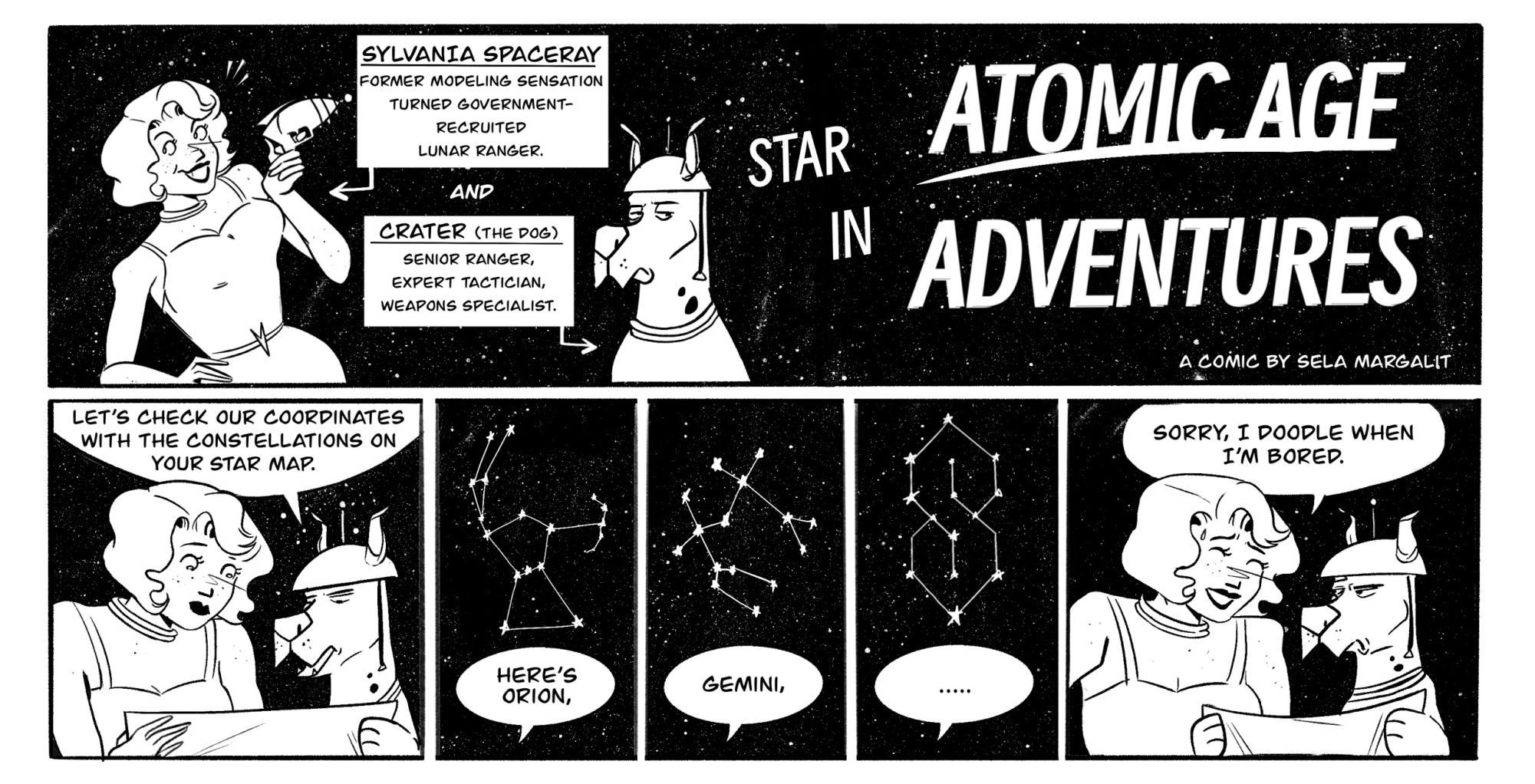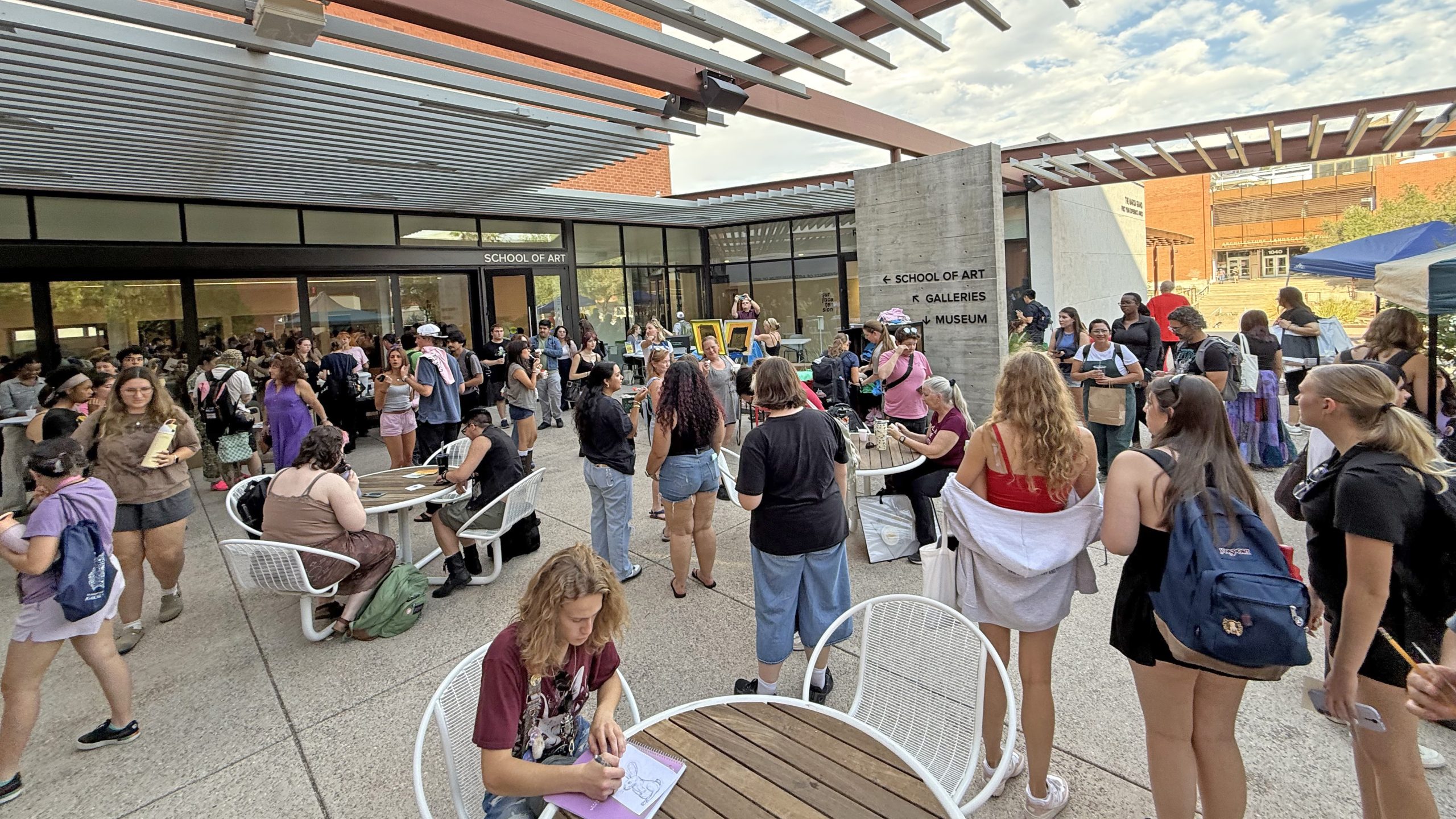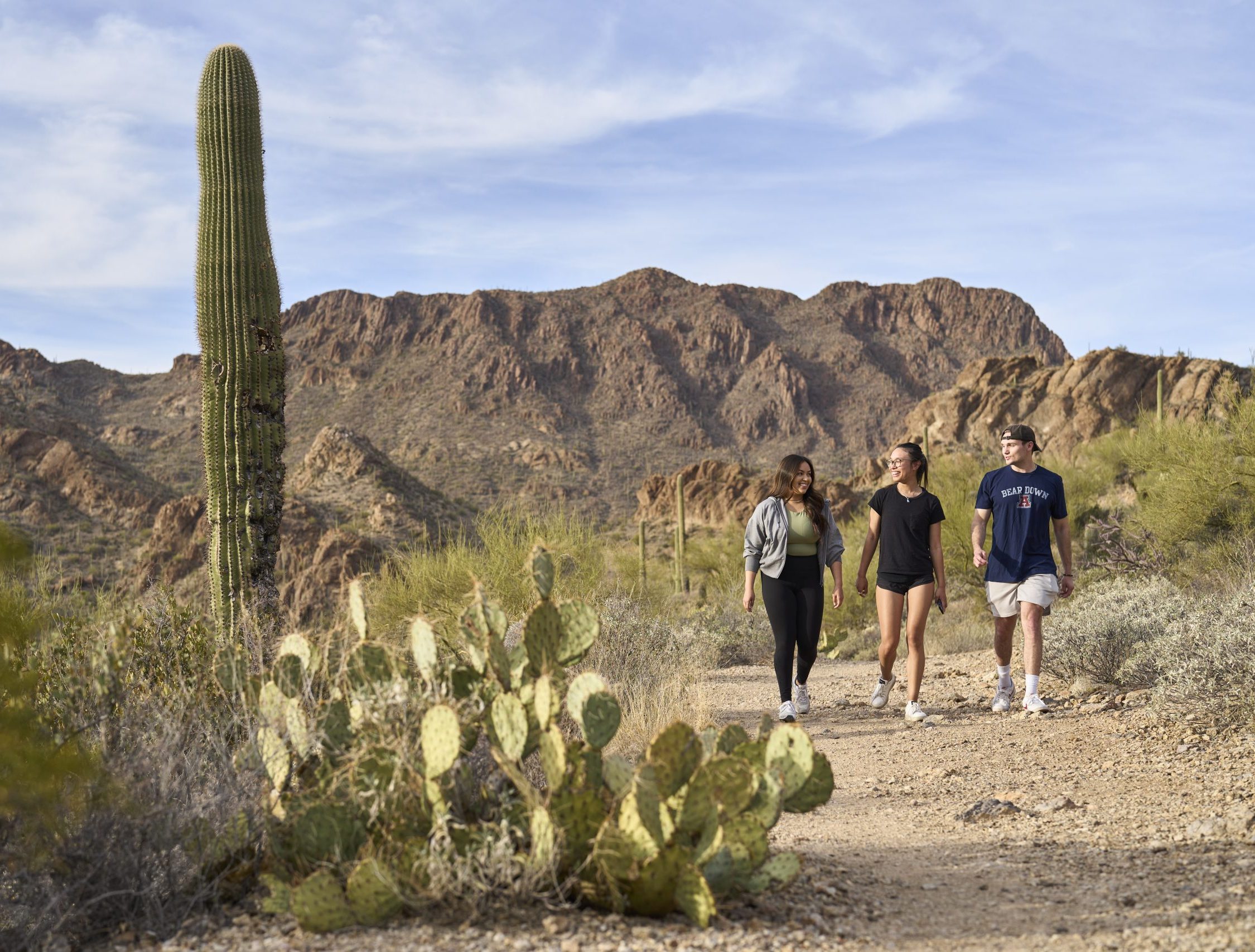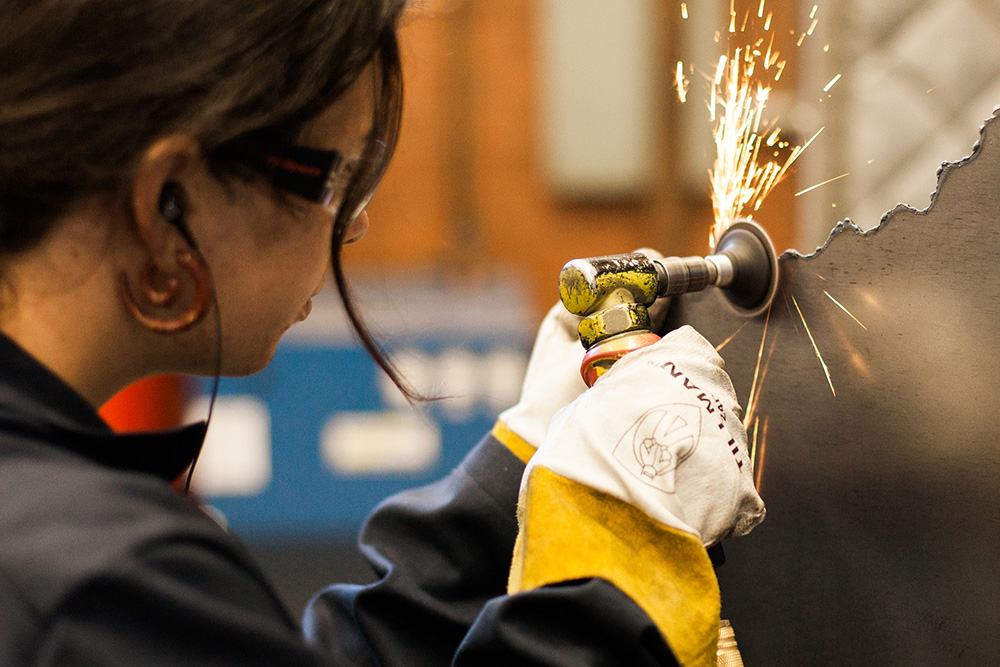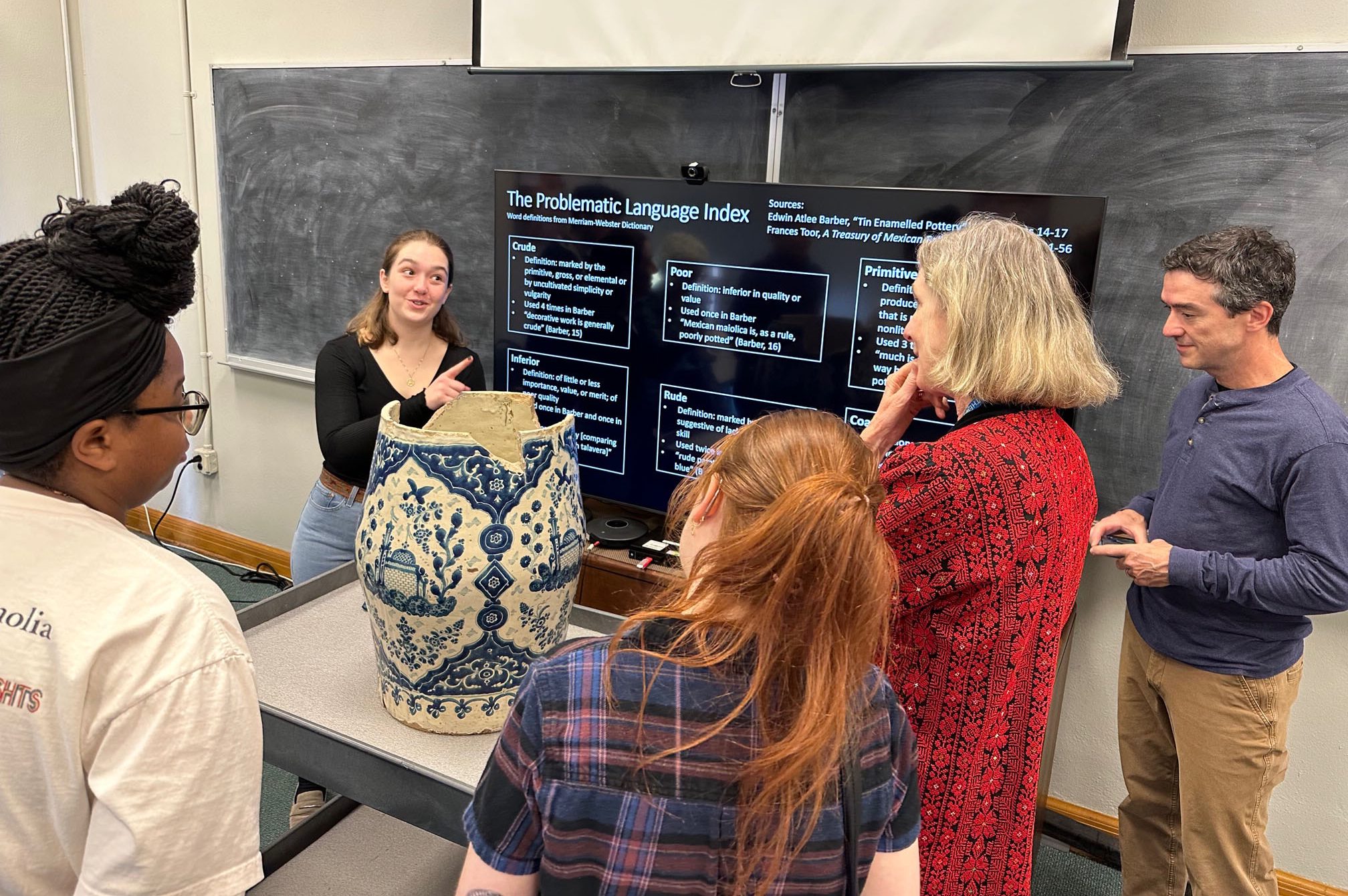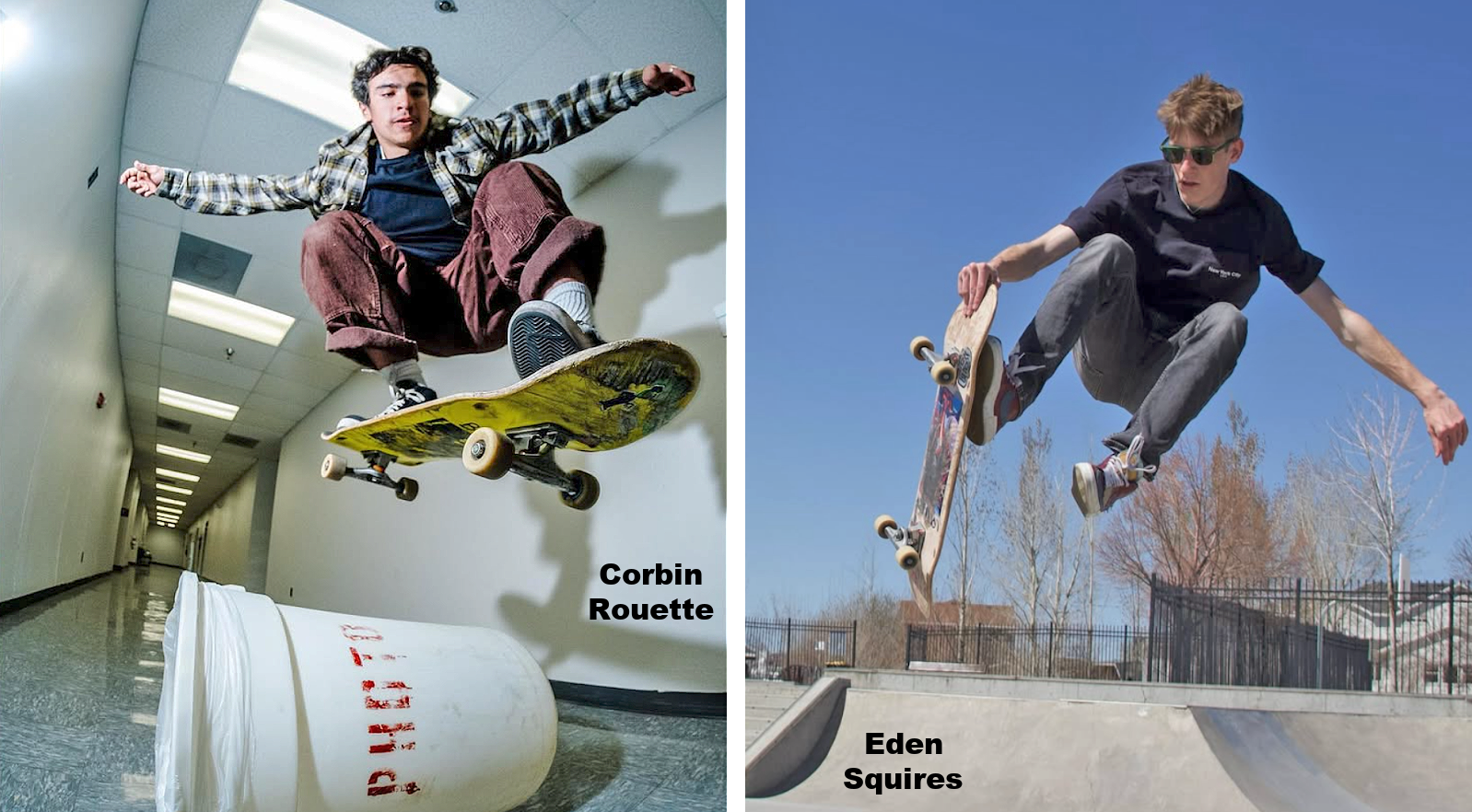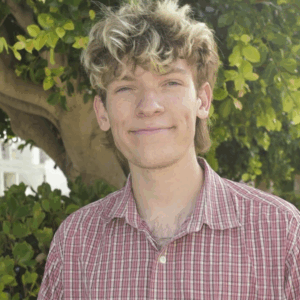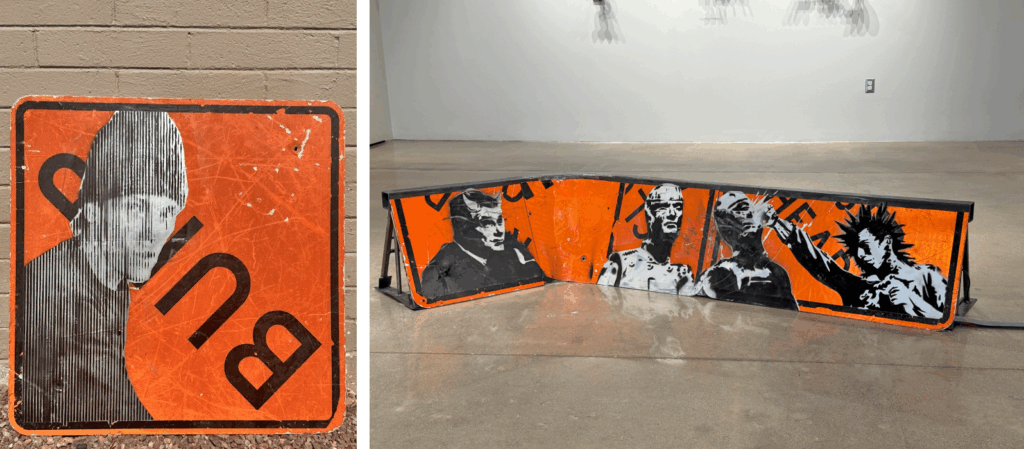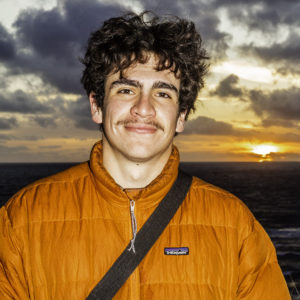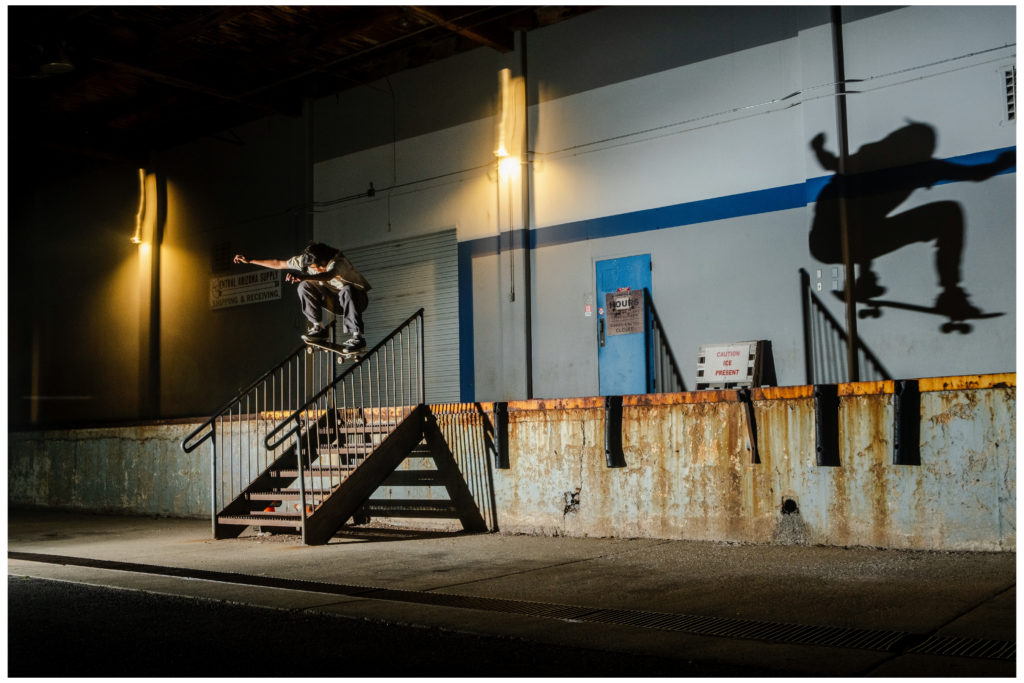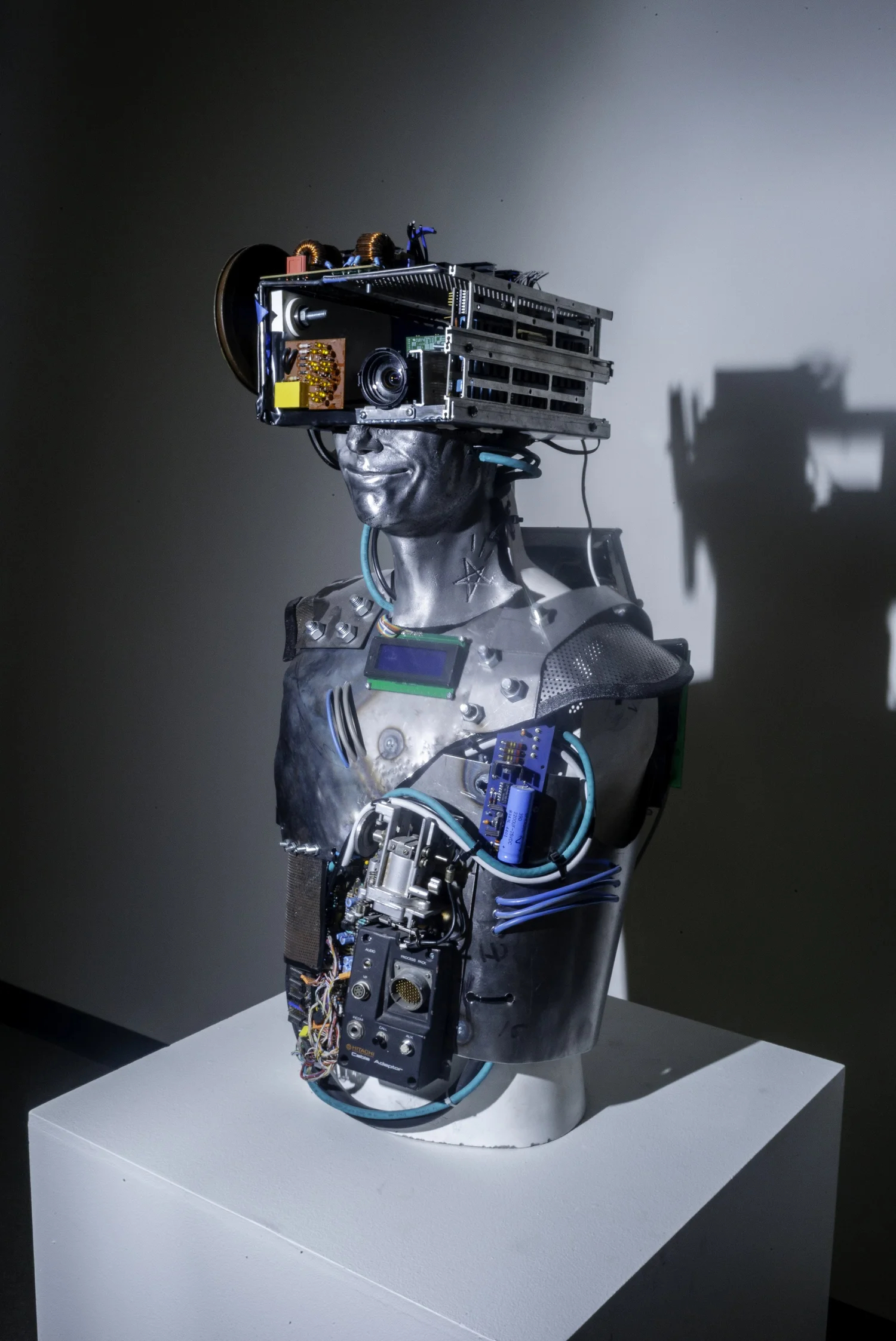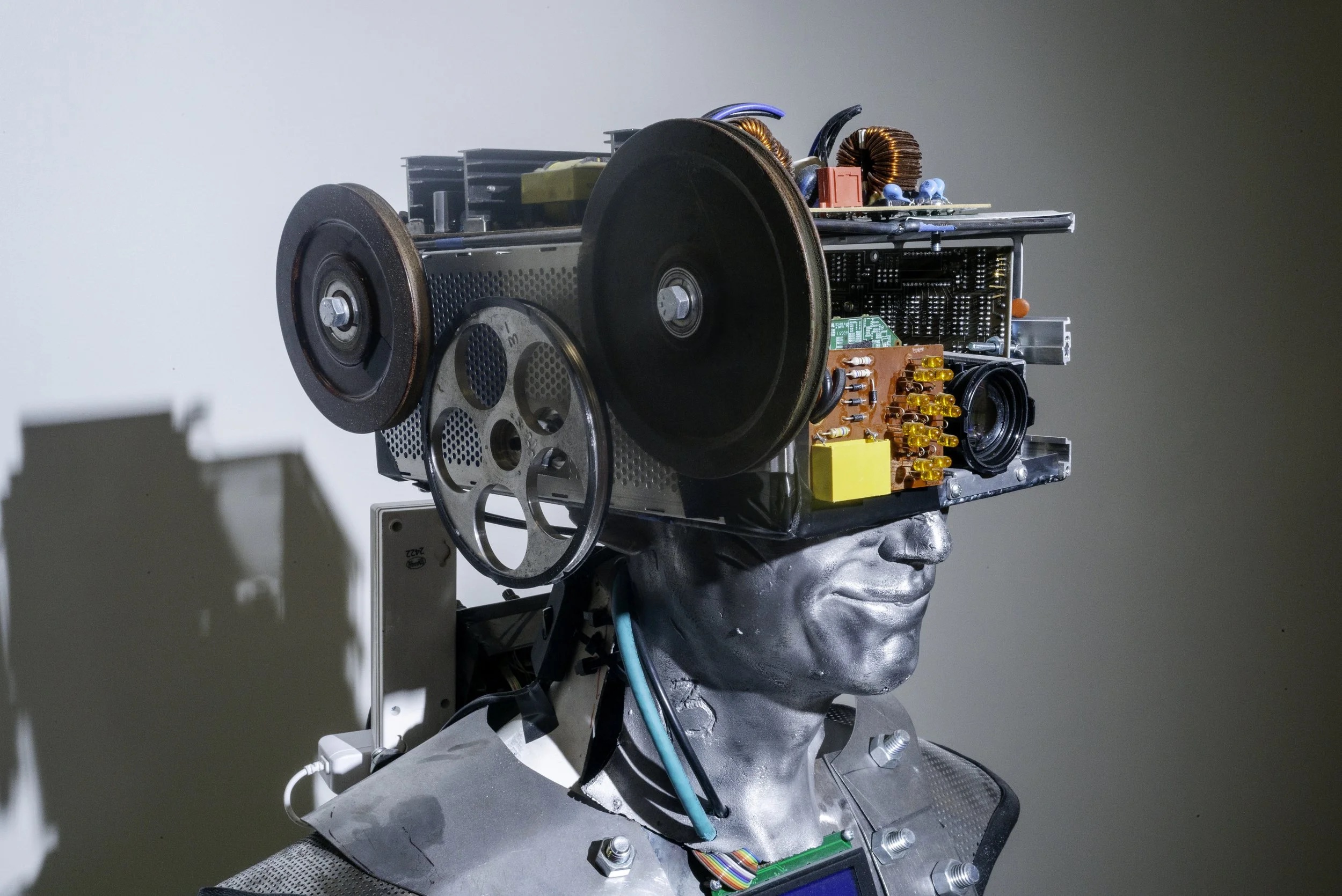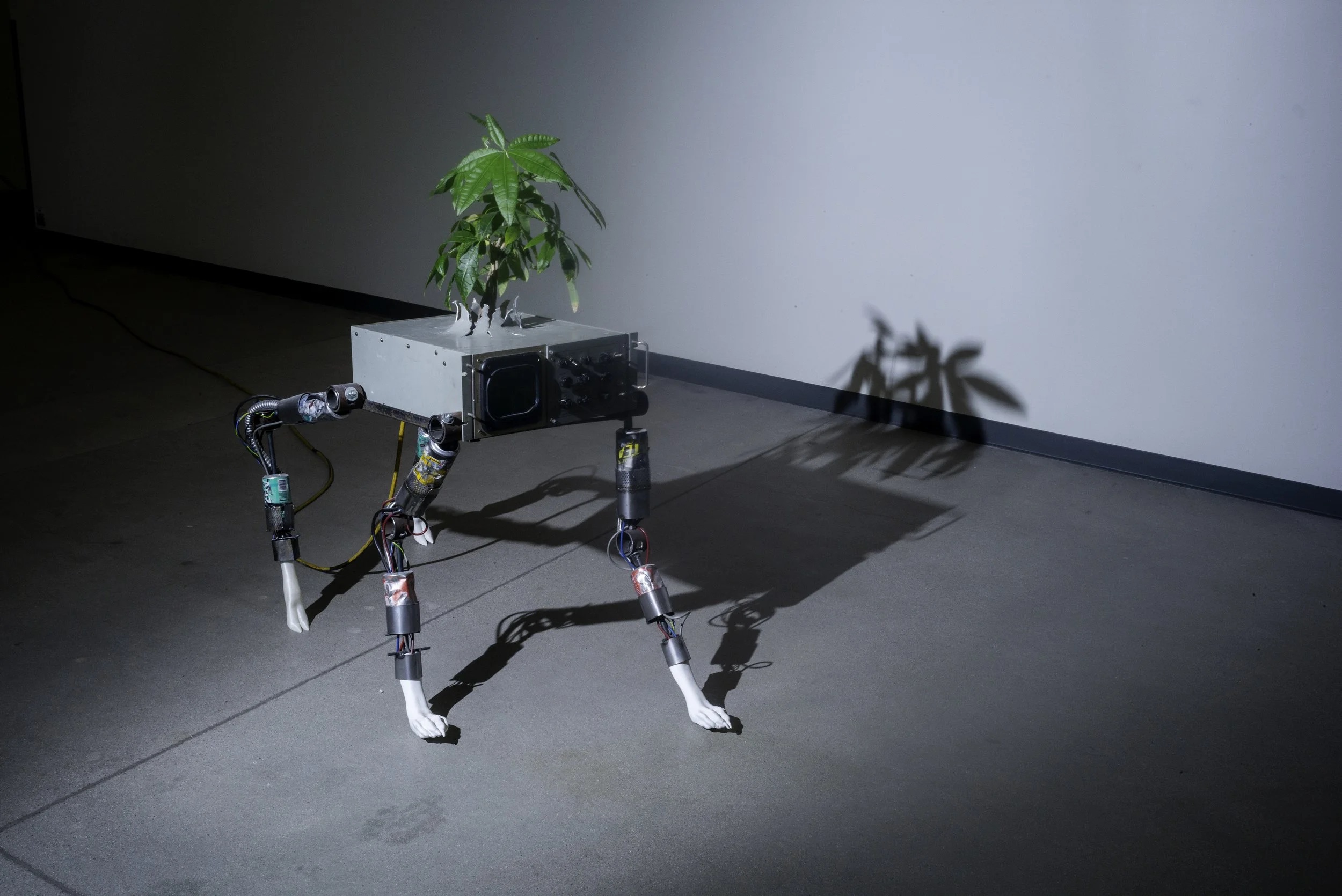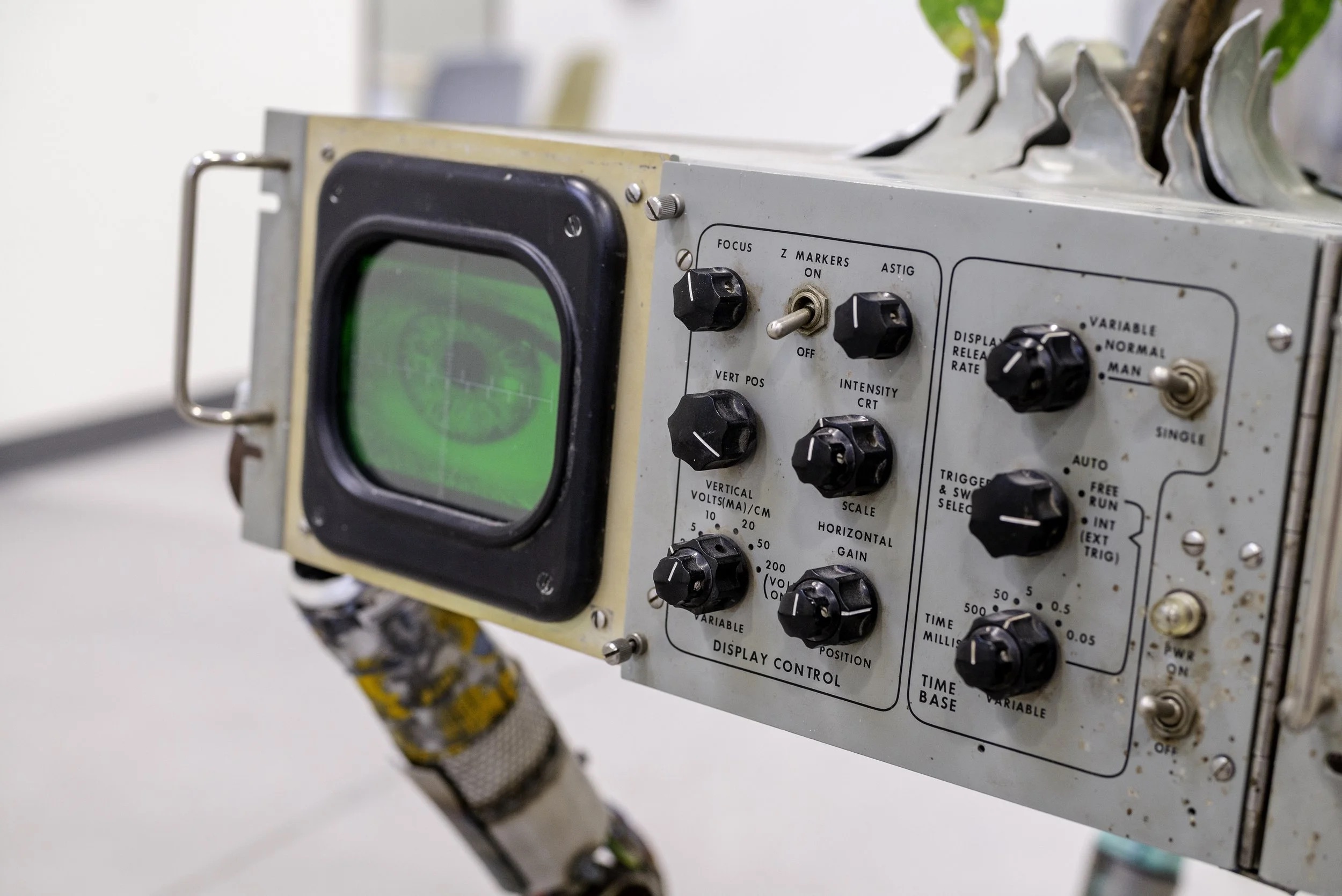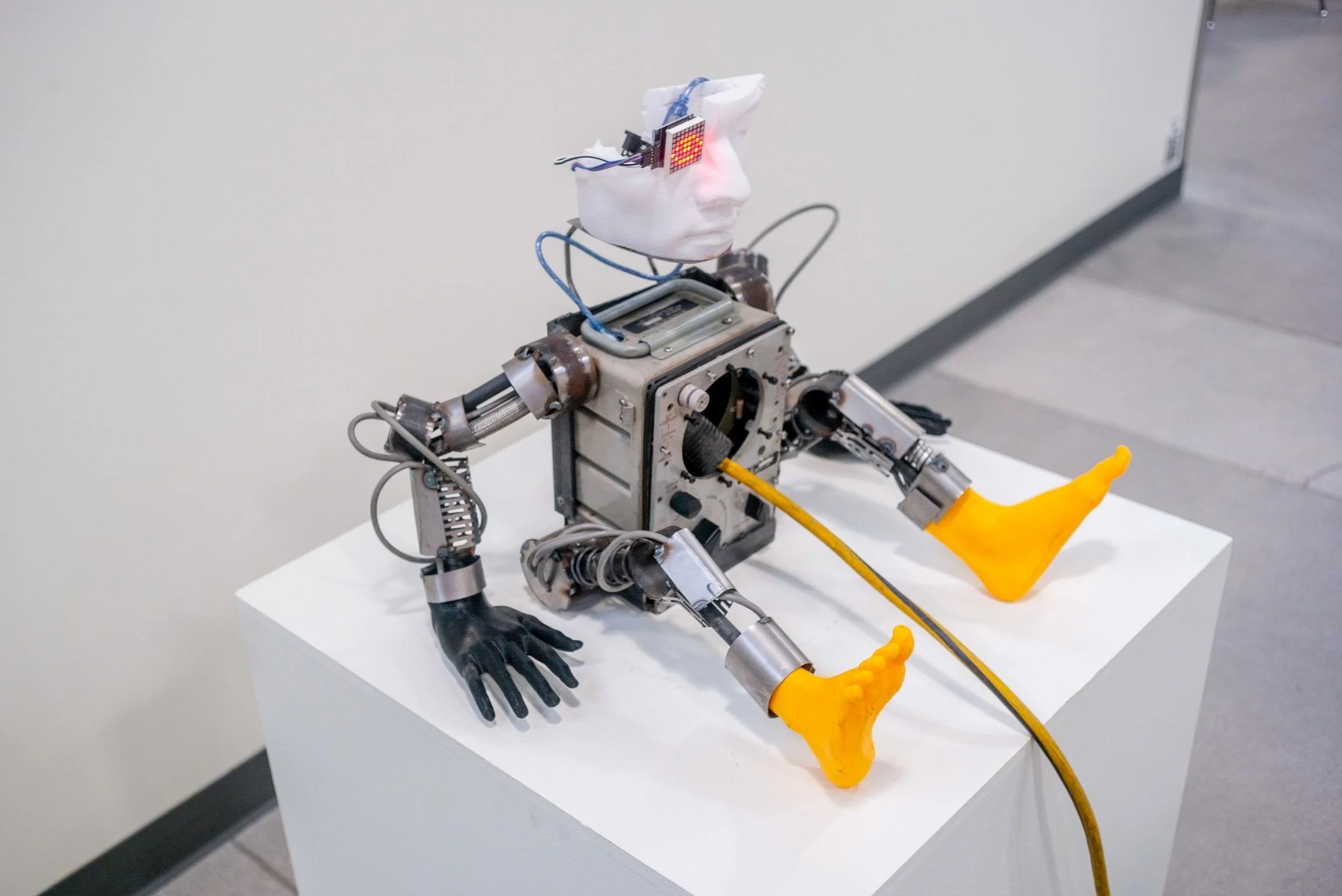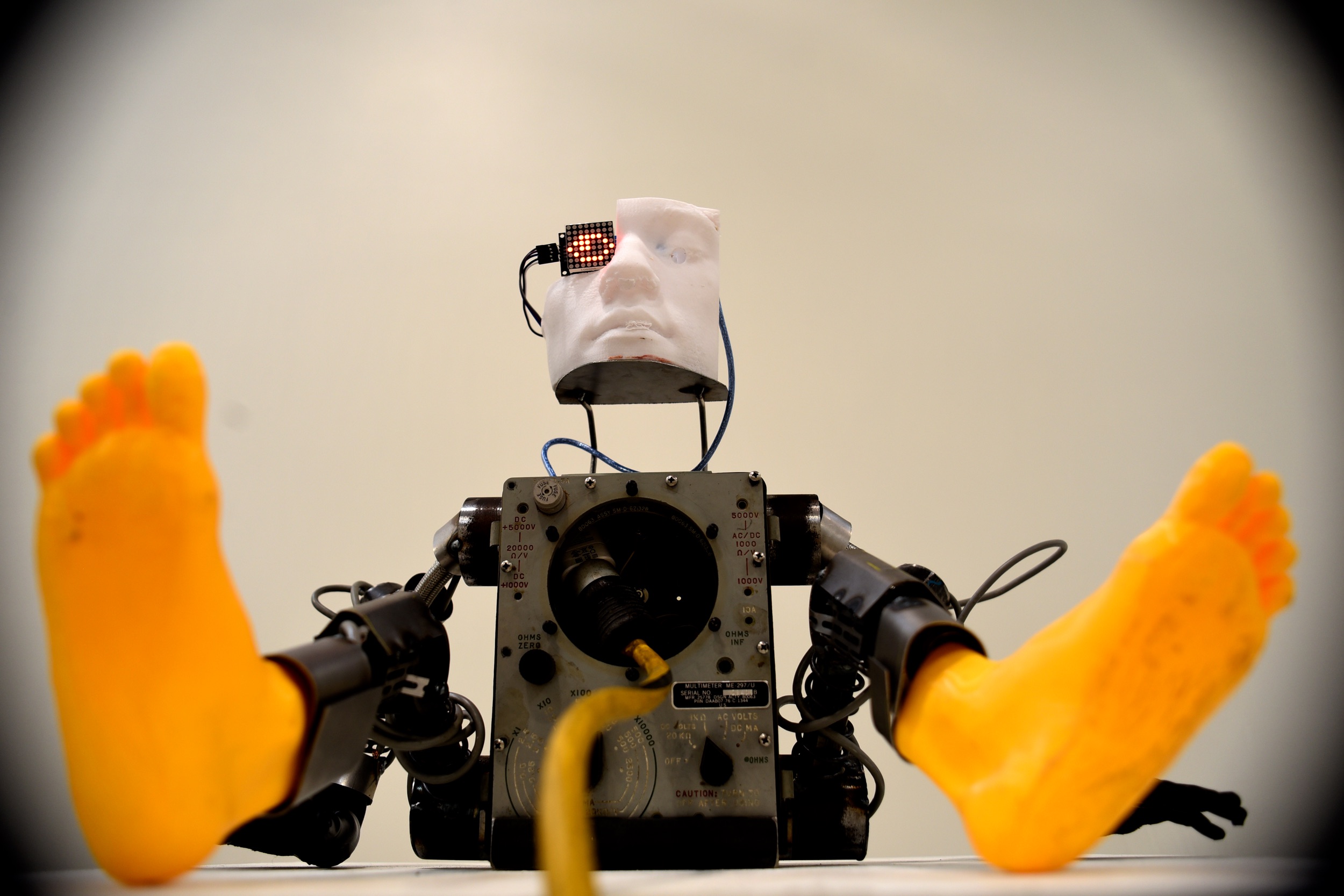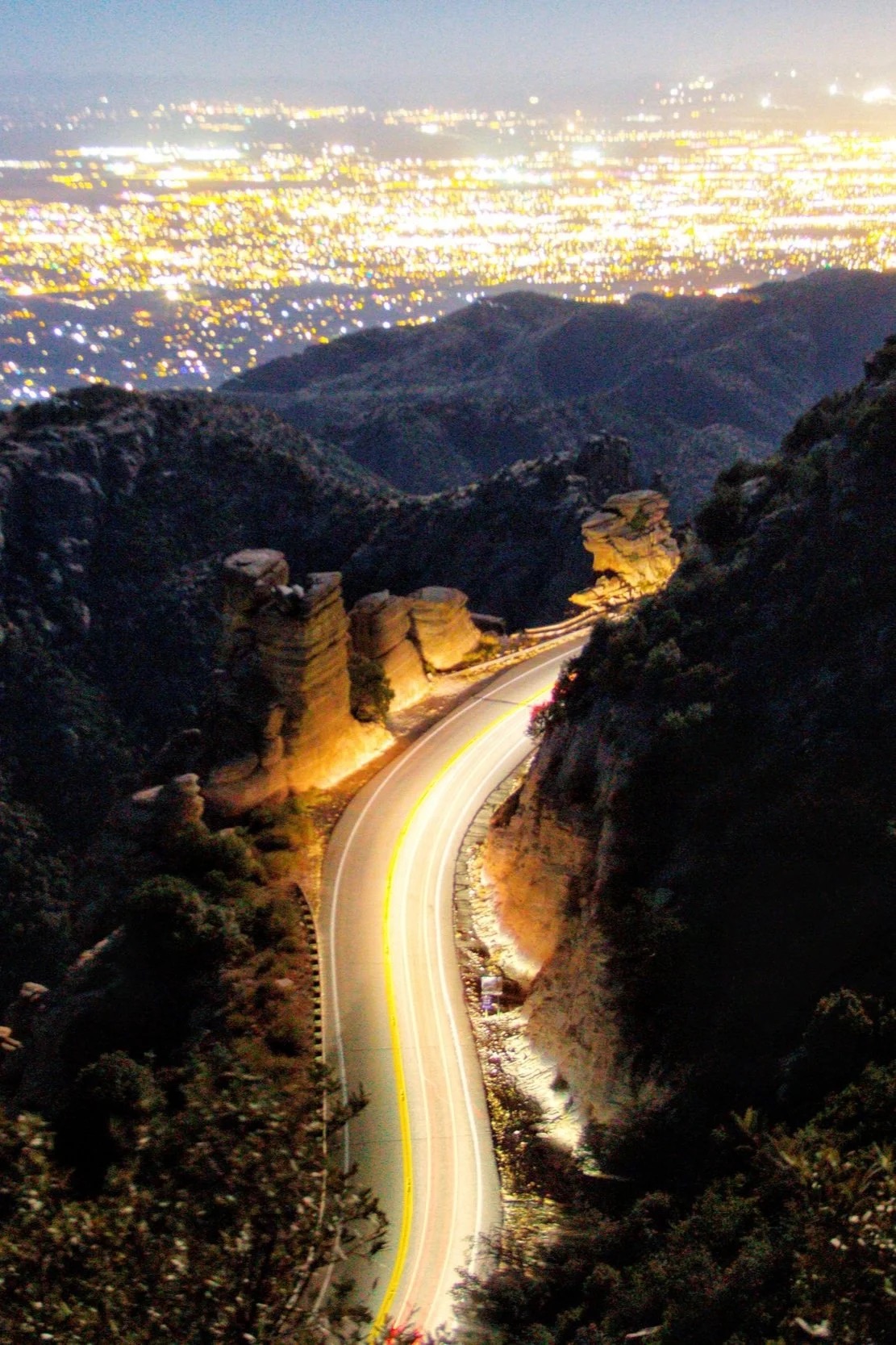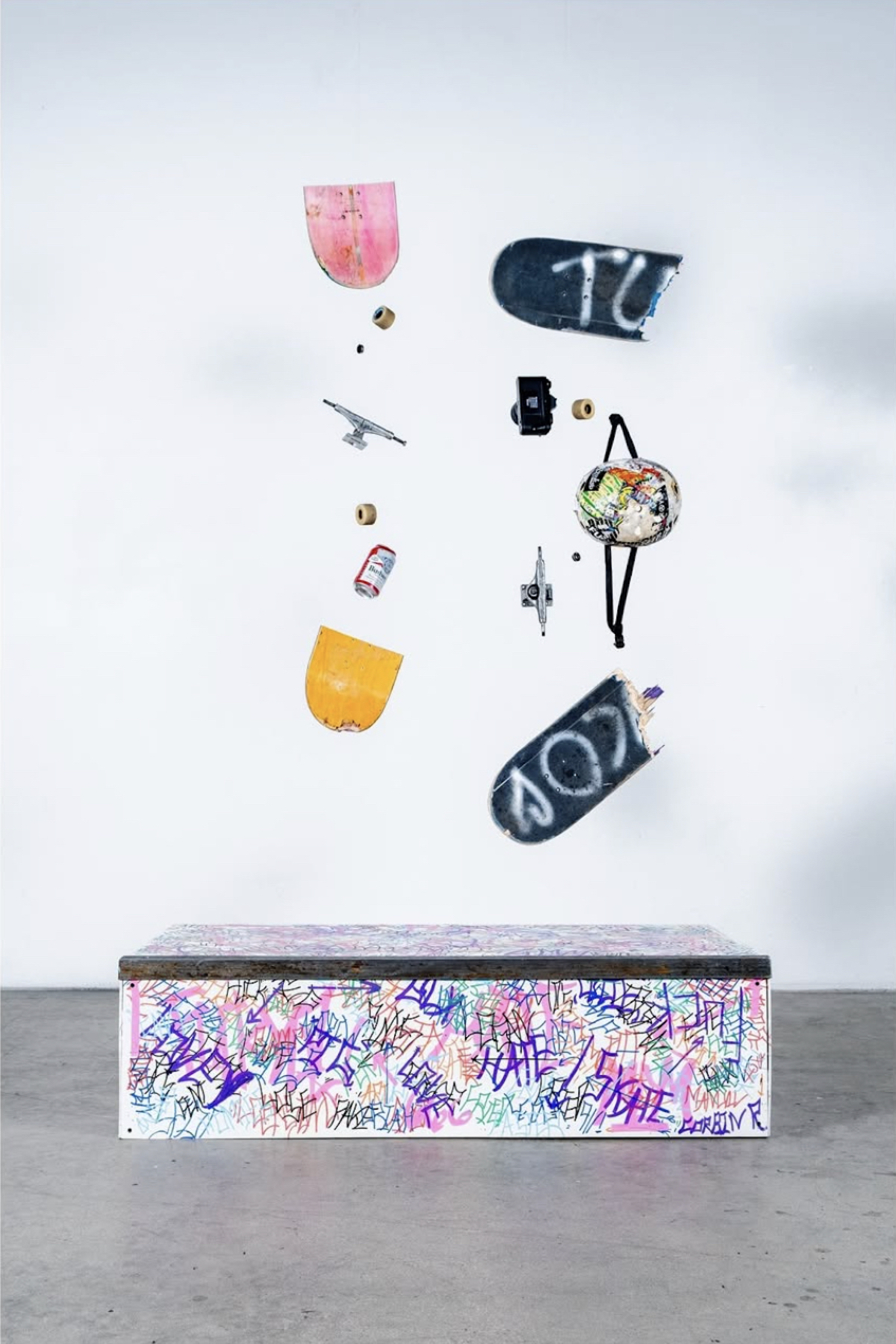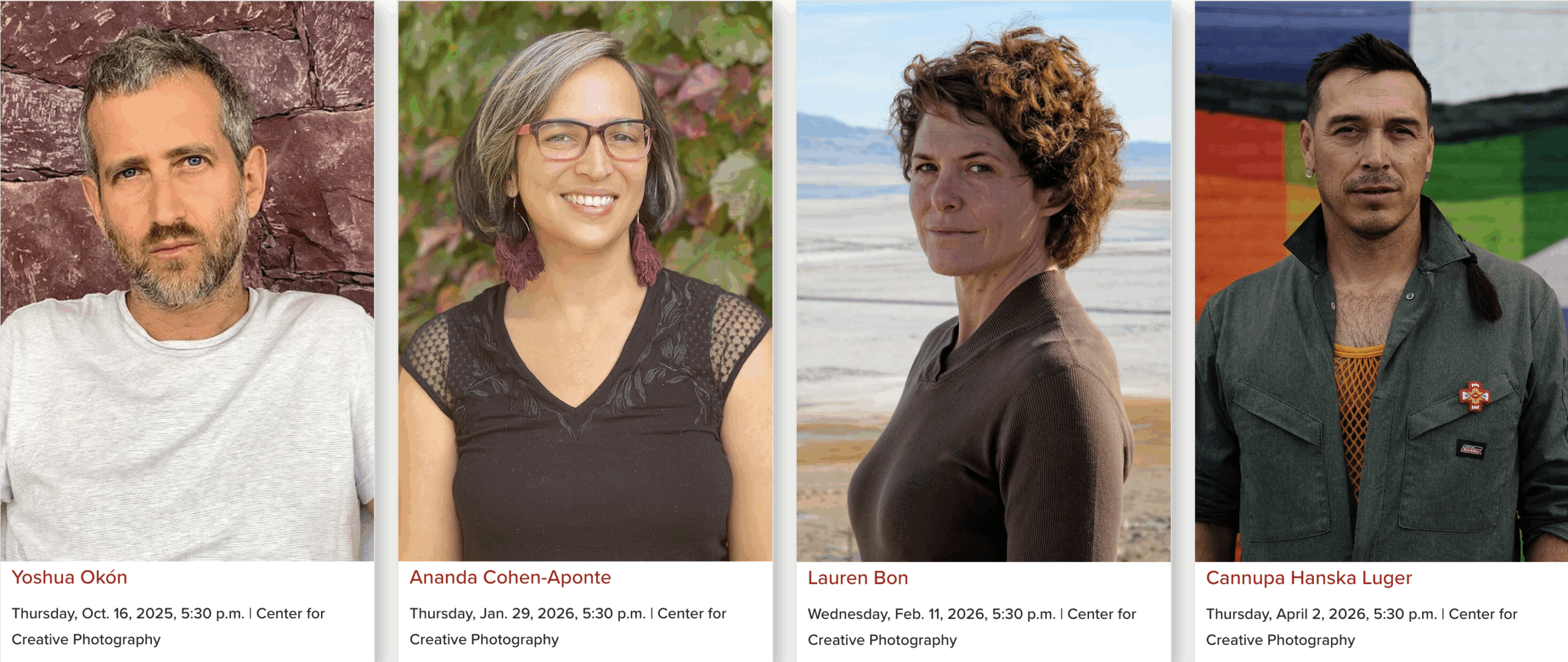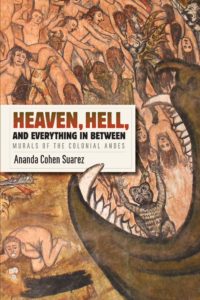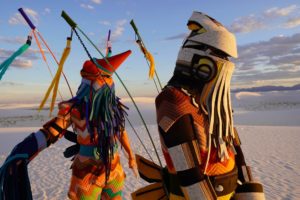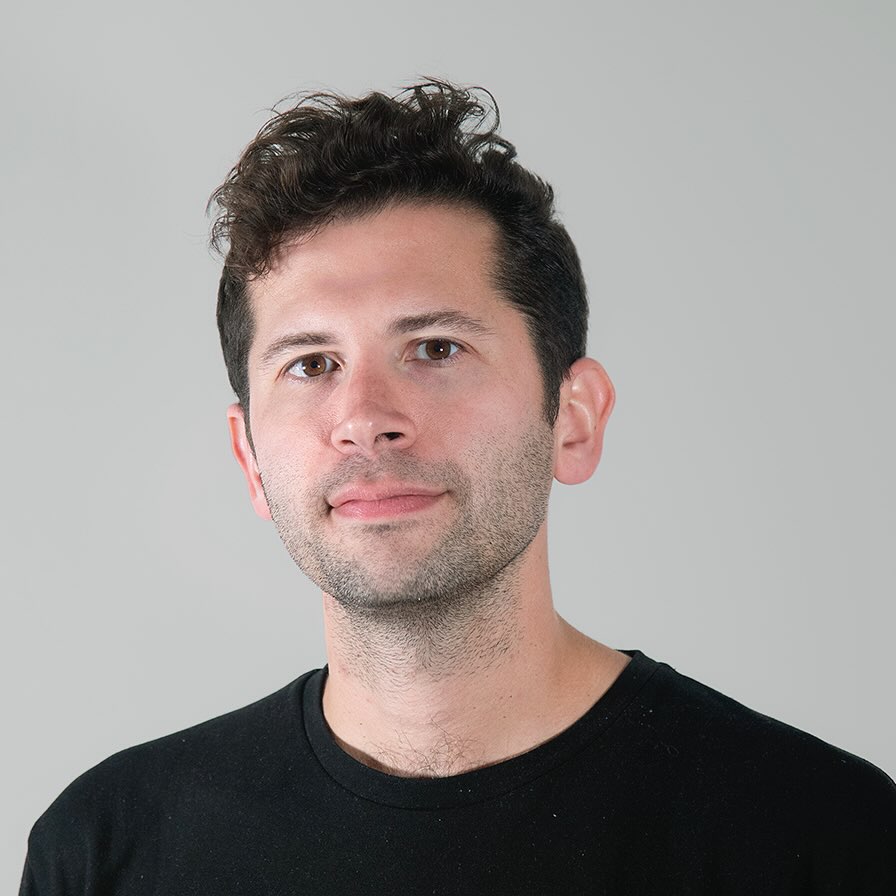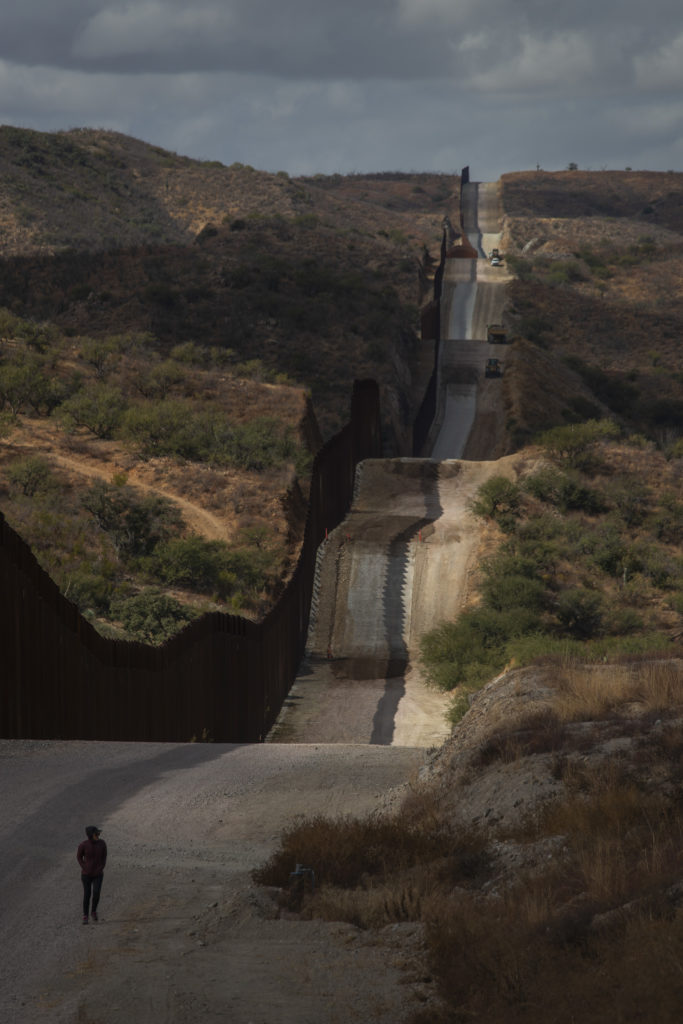For her dedication to animation, illustration and creative storytelling, Sela Margalit has been named the School of Art’s Outstanding Senior for fall 2025.
The Studio Art major carries a near-4.0 grade-point average with a minor in Film & Television and Art History, is a paid intern at Arizona Public Media and helped produce animation projects for Biosphere 2, the Borderlands Restoration Network, Semiconductor USA and AZPM.

But Margalit has had the most blast — “no pun intended,” she said — creating her “Atomic Age Adventures” comic strip for the Arizona Daily Wildcat. Since fall 2023, she’s produced over 40 strips in the series, which features Sylvania Spaceray — a modeling-sensation-turned-government-recruited lunar ranger — and Crater the dog carrying out missions on the moon, including trying to outsmart a small alien.
“I think writing comes the easiest when characters feel like real people and I’m just checking in on their lives, which is definitely how I feel about Sylvania Spaceray and Crater the dog,” Margalit said. “So much, that I also made my capstone film, ‘Atomic Age Adventures!’ about them. My favorite recurring character is definitely the alien. I have a hobby interest in alien theory, and he’s just a really funny little guy.”
Her mom encouraged her to join the campus newspaper as a sophomore. “At first I was shy,” Margalit said, but she quickly rose to become comics and illustration editor while mentoring other artists. The confidence she gained led to more successes as Margalit:
- Worked on “Small Seeds; Big Change,” a Center for University Education Scholarship-supported initiative and class collaboration with Borderlands Restoration Network (BRN), in which she developed a short animation about the Sky Islands ecosystem. The clip was shown at the “What’s Up, Docs?” showcase at The Loft Cinema, where Margalit also participated in a Q&A on stage.
- Met award-winning documentary filmmaker Lisa Molomot, who hired Margalit to deliver a short animation sequence for Semiconductor U.S.A. to help teens learn how semiconductors work and are part of everyday life.
- Participated in The Wonder Studio at Biosphere II Summer Residency, where Margalit produced a humorous short about a curious scientific researcher from Mars who investigates the history of biomes at the living laboratory north of Tucson. Following the residency, she curated a short animation program of her fellow residents’ work for First Friday Shorts at The Loft Cinema.
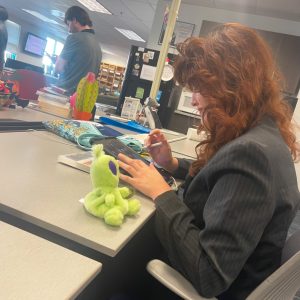
“Sela has sought out every opportunity in animation throughout her degree path and delivered consistently polished, creative, and conceptually impactful work,” School of Art animation Assistant Professor Nicole Antebi said in a nominating letter for the Outstanding Senior Award. “She has also positioned herself as a leader among her peers through her collaborative efforts.”
Last fall, Antebi introduced Margalit to Arizona Public Media producer Andrew Brown, who offered the student an internship with Arizona Illustrated in spring 2025.
“Sela worked successfully with our producers across a variety of projects that have helped us tell more engaging and dynamic stories and better serve our audience,” Brown said. “She has a good work ethic, is professional and easy to communicate with and takes direction well.”
Following the internship, Margalit became AZPM’s first paid student intern in animation. She contributed a key sequence to the story, “Eveli: The Algerian Born Jeweler of the Southwest” — a collaboration with Antebi’s animation class and another “high-stakes professional opportunity with a public-facing audience,” Antebi said. “Once again, Sela delivered strong, visually compelling, and polished work.”
Said Margalit: “When Eveli producer Özlem Özgür reached out to me about how she wanted more animation to be woven through the piece, I was ecstatic. It was a bit daunting as it was more animation than you typically do in the class, but with my film background I gained knowledge of editing and was able to pull it together quickly.”
In addition, Margalit pulled together her 4-minute animated senior capstone project for the spring 2025 BFA Capstone Show in Illustration, Design & Animation, despite an ambitious timeline. She “held auditions for voice talent, storyboarded the entire piece, animated and colored it, added audio, and had everything finished before the end of the semester,” adjunct instructor Valentin Mancha said.

“I’ve had memorable moments with so many of my professors,” Margalit said. “Professor Antebi really showed me the breadth of possibilities in animation, as well as offered constructive critique for my technical skills and advice about animation as a real career. I was unsure of design at first, but Prof. Watanabe made design both fun and actually digestible. Lastly … Prof. Mancha believed that I could finish my ambitious capstone and went out of his way to connect me with the resources and feedback I needed.”
Born in Los Angeles, Margalit moved to Tucson later in her childhood. “Being around a lot of art museums and media in L.A. “led me to having a passion for the arts,” she said. “Furthermore, my mom showed me so many different books, TV shows, movies — both educational and entertaining — that really ignited a spark for storytelling and creativity. I loved animated content from Cartoon Network, PBS Kids, and Disney, as well as comic books (especially X-Men).”
All those experiences helped her excel at the School of Art and campus newspaper.
“The Daily Wildcat is truly my home on campus,” Margalit said. “Coming into the comics desk, it was a great opportunity, but I wondered how it could be better. With the support of my fellow student members, as well as our advisor Susan McMillan, the comics desk has grown so much and I’ve had the opportunity to guide so many artists in creating their work, both in comics and editorial illustrations.
“Making art that supports the journalistic work the paper does is so important,” she said, “but it is also awesome that the completely creative pursuit of comics also has a place in the Daily Wildcat.”
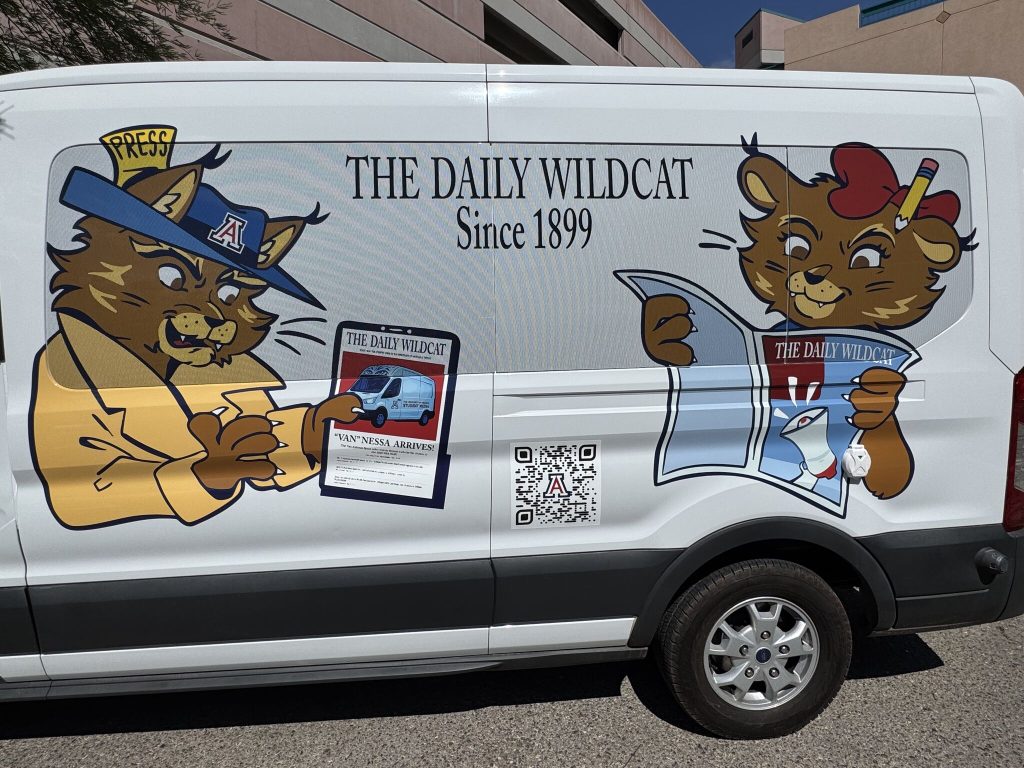
As for the future, “I feel like being open to any creative opportunity is crucial,” Margalit said. “I’m planning on staying in town for a while and continuing to seek out as many opportunities as I can while promoting my work and continuing to develop my portfolio skills. I plan to do freelance work, try to participate in local events and keep integrated in the community.”
In her recent Halloween comic strip for the Wildcat, Margalit’s Sylvania Spaceray creates a lunar latte for Crater the dog, similar to a pumpkin latte. Crater doesn’t like it, calling it “dirt in a cup,” and Slyvania admits, “I didn’t say it was going to be good.”
For Margalit, though, even Crater the dog would agree that her future looks bright.
“Sela’s consistent determination, forward-thinking, and ability to creatively perform at a high level will ensure that she will make a significant impact wherever her career takes her,” Antebi said. “Through her numerous successful collaborations and the positions mentioned here, Sela has already taken the first steps in positioning herself on a strong career trajectory.”
